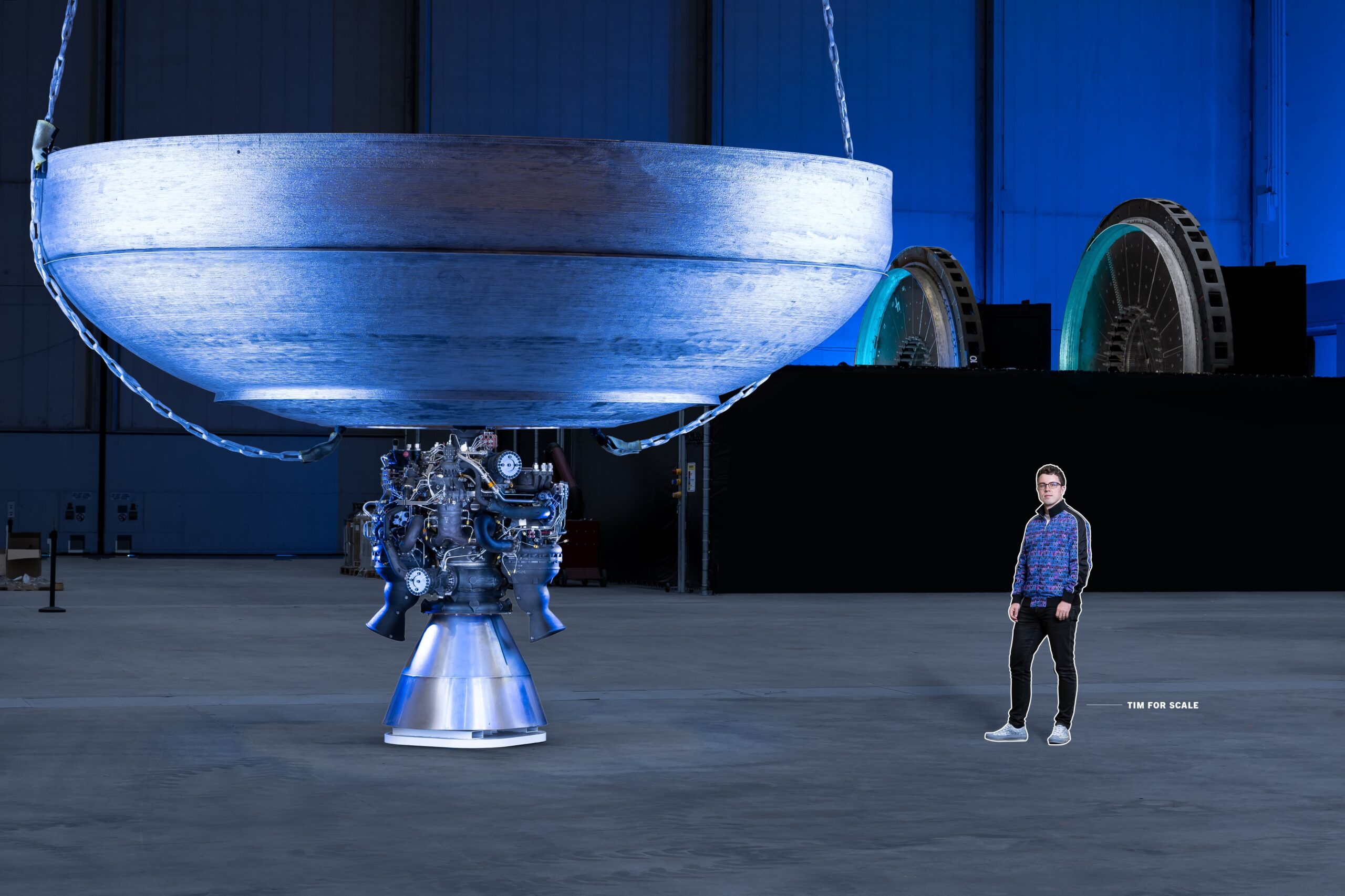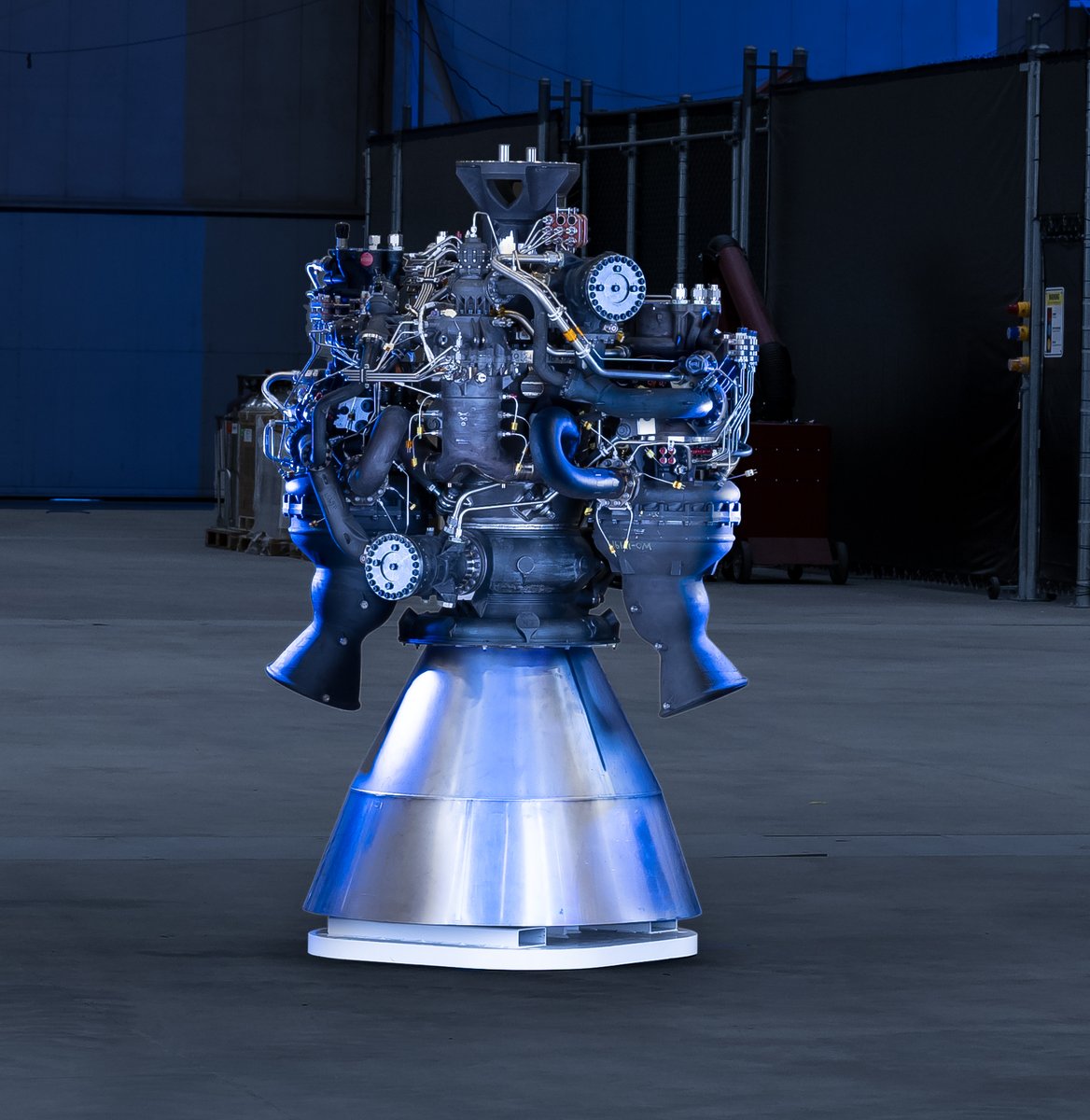Relativity Space Pivots: The Terran 1 3D Printed Rocket is Dead. Long Live Terran R
It was the beginning of the 3D printed rocket era. With Terran 1’s ascension to orbit, Relativity Space was finally ready to leave its mark on the coveted space technology scene. So, why is the company announcing the demise of its flagship Terran 1 rocket? Of course, the rocket failed to reach its target orbit, but it did prove that 3D printed launch vehicles can reach space. In fact, Terran 1 achieved many historic milestones, including crossing the 100km Karman line and passing the highest loading conditions at Max-Q (short for maximum dynamic pressure), becoming the world’s first 3D printed rocket to fly.
Despite all the effort put into this first demonstration rocket, Relativity’s co-founder and CEO Tim Ellis has said, “Terran 1 was like a concept car, redefining the boundaries of what is possible by developing many valuable brand-new technologies well ahead of their time.” Except, since 2017, the space company has been selling Terran 1 as an expendable two-stage small-lift launch vehicle that could carry a payload of up to 1,250 kg (2,760 lb) to low Earth orbit (LEO). It even had an advertised launch price of $12 million per mission and customers, like Iridium Communications (NASDAQ: IRDM) and OneWeb, for the rocket’s subsequent missions.
Customers or not, Terran 1’s first test launch from Cape Canaveral on March 2023 reached space but failed to achieve orbit due to a breakdown on the second stage. Unfortunately, that “defeat” was enough to send it to the land of the discarded and any projects to build more Terran 1’s along with it.
The first of many?
Today, the company shared critical findings from Terran 1’s “Good Luck, Have Fun” (GLHF) flight, along with news on its updated go-to-market strategy for Terran R, its reusable medium-to-heavy lift, and 3D printed orbital launch vehicle.
According to the official documents, the rocket encountered an anomaly at stage two, causing the engine not to reach full thrust. However, the success of GLHF’s March 22 launch confirmed a fundamental hypothesis for Relativity, that 3D printed rockets are structurally viable and capable of withstanding maximum stresses during flight.
Today, Relativity announced accelerating its focus on Terran R to meet significant market demand. Its Terran R also represents a giant leap towards Relativity’s mission to build humanity’s multi-planetary future, eventually offering customers a point-to-point space freighter capable of missions from the Earth to the Moon, Mars, and beyond, states the firm.
“Our first chapter as a company was to prove to the world 3D printed rockets were viable. We just did that with Terran 1. Our second chapter is to build the next great launch company with Terran R,” said Ellis. “Terran R is the most customer-centric next-generation launch vehicle. It is not a conventional rocket. This is a new breed of launch vehicle with the right payload performance, reliability, focus on speed of development, optimized reusability, focus on scalability of launch ramp rate, and ultimately cost reduction baked into the architecture design and our program plans from day one.”

Terran R infrastructure is being 3D printed in Long Beach, California. Image courtesy of Relativity Space via Twitter.
Terran R is described as a mass-market, huge-demand product that will be amazing precisely because it brings those “concept car” developments from Terran 1 into full maturity, enabling Relativity to become a provider in the medium-to-heavy lift launch market.
Building on momentum from Terran 1’s development and flight experience, Relativity shared updated Terran R vehicle architecture details. Designed for rapid reusability and development iteration speed, Terran R is a 3D printed rocket, with initial versions using aluminum alloy tank straight-section barrels in a hybrid manufacturing approach, which allows the company to meet the rapid launch and ramp rate timelines necessary to serve overwhelming market demand, including servicing Relativity’s signed customer backlog of $1.65 billion in Launch Service Agreements (LSAs) and additional several billion dollars in active customer LSA dialogue.
Once deployable, Terran R will rely on Relativity’s proprietary 3D printing technology and raw materials to create it with 100 times fewer features in less than 60 days, breaking with aerospace’s decades-old rocket-building tradition.
Transition
Each Terran R requires approximately six times more 3D printing by mass than Terran 1. Initially, the two-stage vehicle will use the same proprietary printed aluminum alloy as flown on Terran 1 with a focus on supply chain scaling. However, a third-generation aluminum alloy, designed for improved performance of an orbital vehicle mission life beyond 20 reusable flights, is in active development, which is accelerated by the aid of artificial intelligence (AI)-based alloy discovery tools.

3D-printed Aeon R rocket engines will power Relativity Space’s Terran R spacecraft. Image courtesy of Relativity Space via Twitter.
Propulsion for the first stage will come from 13 3D printed Aeon R engines designed to use liquid oxygen and liquid methane propellants. Designed and manufactured in-house, Aeon R engines will be highly reusable and feature a uniquely high-pressure gas generator cycle driving two turbopumps.
Eager to move on to Terran R’s full production, the team at Relativity is working out of the company’s Long Beach, California headquarters to complete production and initial structural proto-qualification testing of Terran R vehicles before traveling to Mississippi for testing. Starting in 2026, Relativity plans to launch Terran R from Space Launch Complex 16, the same launch site at Cape Canaveral, Florida, where Terran 1 made it’s one and only flight to space.
Subscribe to Our Email Newsletter
Stay up-to-date on all the latest news from the 3D printing industry and receive information and offers from third party vendors.
Print Services
You May Also Like
New Business: Temporary, Migratory, & Modular 3D Printed Architecture
If we look at potentially emerging 3D printing businesses, then architecture has not been fully explored. Yes, there is a lot of house 3D printing going on worldwide. From deployable...
3D Printing News Briefs, April 19, 2025: Material Extrusion Standard, Metal Powder, & More
In today’s 3D Printing News Briefs, we’re covering a proposed standard for material extrusion, before moving on to business and metal powder. We’ll end with a commercial store’s robotic 3D...
Japan Unveils World’s First 3D Printed Train Station
Japan is now home to what we believe is the world’s first train station built with 3D printing technology. Located in Arida City, just south of Osaka, the new Hatsushima...
restor3d Raises $38M to Expand 3D Printed Orthopedic Implants
Backed by $38 million in new funding, restor3d is pushing ahead with the launch of four personalized implant lines, set to roll out in 2025 and 2026. This latest venture...


























